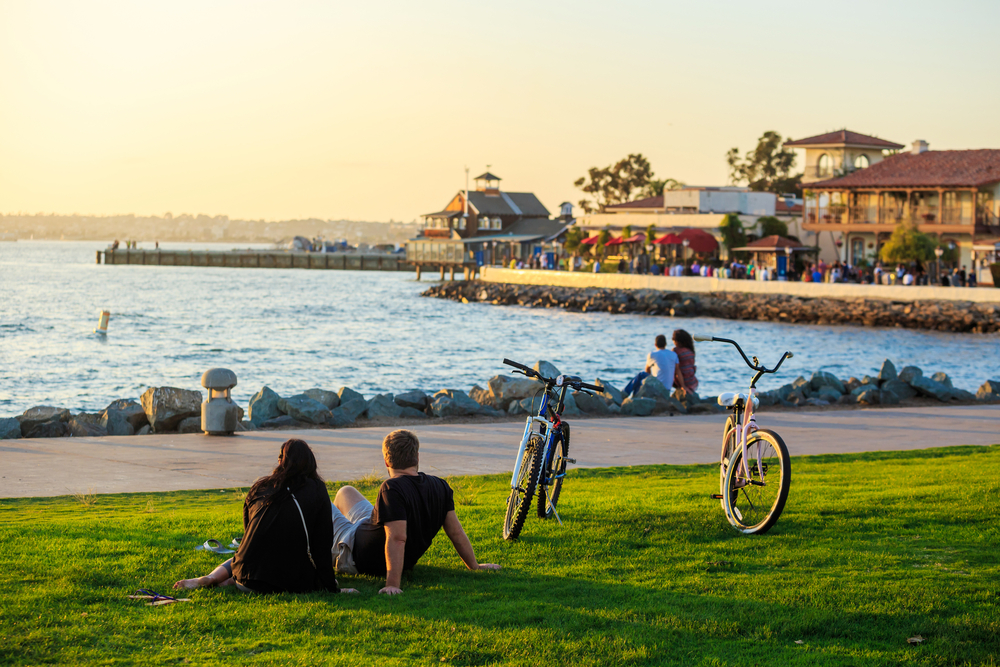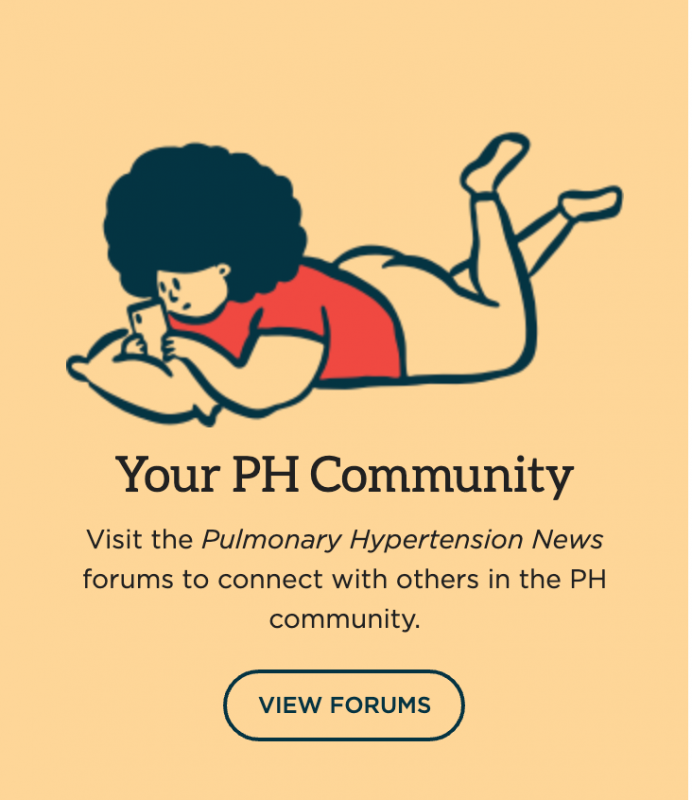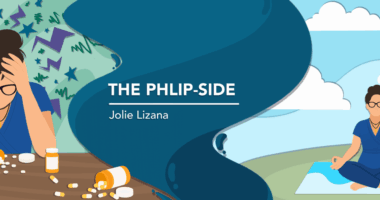Are Endorphins Part of a PH-Balanced Breakfast?

At the start of pulmonary rehabilitation, I was asked to write out a goal to work toward throughout the three months of sessions. Without realizing how unrealistic it sounded, I jotted down that I would like to run a 5K race. At this point, I was newly diagnosed and I lacked a real understanding of what the future looked like and what would be the extent of my physical ability.
I grew up in a large, active family that practically ate endorphins for breakfast, and honestly, it was hard not to when you call San Diego, California, your hometown. As kids, my siblings and I were very active outdoors; whether the playing field was concrete, grass, or sand, we filled up our days riding bikes, swimming in the ocean, rollerblading on the playground, and just running around the neighborhood making a racket. I played soccer and baseball throughout elementary and middle school. I will never forget the thrill of playing forward and scoring my first goal, or the time I took the mound to throw a few pitches during a Little League season when my team went undefeated in regular season.
My dad is a true believer in the power of exercise and its ability to positively affect one’s emotional and mental well-being, and generally improve one’s outlook on life. It wasn’t uncommon for all of us to go on a family bike ride Saturday morning followed by a swimming session in the afternoon. I loved speeding down a big hill waving my hands in the air, skidding to an abrupt stop right before the stop sign. I held less enthusiasm for the swimming unless I could spend most of the time doing cannonballs off the diving board. But I enjoyed hanging out with my family even if I felt like the less active one in the bunch.
While I swapped organized sports for student government and theater activities throughout high school, I did pick up running — something else that family members did on a regular basis. I even did a stint running cross-country. I’m no Usain Bolt when it comes to speed, but I craved the individuality of running and how it challenged every fiber in my body. (You know you’re feeling those endorphins when you’re running up a hill, stop to throw up, and keep pushing forward to finish the race.)
After moving to Washington, D.C., I fell in love with running on the National Mall and along the tidal basin with the monuments standing tall in the background. It’s been a little more than two years since my last run. Leading up to my pulmonary hypertension diagnosis, it took everything inside of me just to walk a few blocks; a mile-long run seemed next to impossible. We all have our challenges when it comes to adjusting to life with PH. The limitations this disease imposes on my life often feel suffocating and it can be easier to think about what I can’t do versus what I’m still able to do.
Yet, with exercise, I can’t help but think that we’re supposed to push ourselves as patients. I often hear from respiratory therapists that it’s important for people with PH to stay active because the exercise can help slow the progression. This was easy to do three times a week when I went to pulmonary rehabilitation, and harder when I didn’t have the accountability of an appointment. There also is the matter of my oxygen concentrator, something I take with me to prevent my body from going into hypoxia and to make it easier to breathe. This means wearing it while working out at the gym, something I struggled with so much that it has turned me off on the gym altogether.
Last December, I was back in San Diego celebrating the holidays with my family. They rarely (if ever) see me wearing oxygen and I was apprehensive about joining in some of the heart-rate-elevating activities. One morning, my brother asked me if I wanted to walk to the beach, about six blocks away from our childhood home. I agreed and warned that I would need to bring my oxygen concentrator with me and probably would need it along the way. At the time, I thought I was declaring this preamble not for my benefit, but because I didn’t want to freak out my brother. Halfway through our walk, I stopped, popped the cannula in my nose and turned on the machine.
We kept walking. At the beach, the waves crashed out in the distance and my lungs opened deeply to take in the salty air. Even though a lot has changed, many things remained the same as they ever were. I might not be running, but I can still join my family to get a taste of those breakfast endorphins.
***
Note: Pulmonary Hypertension News is strictly a news and information website about the disease. It does not provide medical advice, diagnosis, or treatment. This content is not intended to be a substitute for professional medical advice, diagnosis, or treatment. Always seek the advice of your physician or other qualified health provider with any questions you may have regarding a medical condition. Never disregard professional medical advice or delay in seeking it because of something you have read on this website. The opinions expressed in this column are not those of Pulmonary Hypertension News or its parent company, Bionews Services, and are intended to spark discussion about issues pertaining to pulmonary hypertension.









Kristin Philipps
thank you soo much for your article. My 18 year old daughter was diagnosed 9 years ago with PH. It is very difficult to decide how much activity is too much! For years we just thought she was lazy.....hard in an active family. glad you got to enjoy your family and the ocean! We all have to remember what we CAN do and count our blessings right?
Blessings,
Kristin
Joanne
Great article Mike. You hit on so many important themes for PHers to remember. When I was diagnosed in '98, a sports-nut friend told me I just needed to exercise (I was very overweight at the time). I tried to explain what PH was but I could see I wasn't getting through to him.
Like you wrote, the latest research does tell us to keep moving. In 1998 we were told to rest but now we know different. The transplant coordinator told me to keep exercising and of course, consult with my PH doc before starting an exercise program. I miss playing volleyball. Being on blood thinners also makes me wary-I had a near catastrophe when my INR got too high a few years back. By the way, there is a PH patient (Rosanne) who has been a lifelong runner and still manages to compete, so perhaps your goal of a 5K isn't out of reach. And thanks for reminding me to get off the couch more.
Precilia Fierro
Hi my name is Precilia and your story is very encouraging. When I was diagnosed 3 yrs ago I was told not to exercise. Things have changed and I am slowly trying to get back to a doable regimen. Pulm rehab did not work for me. Mostly COPD patients were there. Feeling those endorphins no matter how little is no doubt healing to the body. Wishing you the best with one day achieving your 5 k goal.
Judy
I have just recently been diagnosed w PH. It explains a lot of how I have been feeling. I have always loved to exercise, I mostly love to run, but also love to bike, ski, hike, and kayak. I now don't have the endurance I have always had. my history is long and complicated starting back in early 90s when I received radiation therapy to my chest/neck/abdomen for Hodgkin's Lymphoma. I relapsed 2 yrs later, then had 6 rounds of chemo- and I was cured! I was so happy and over time returned to exercise. That was over 25 yrs ago. Last few yrs I have been diagnosed w 3 leaky valves in my heart, scarring fibrosis in my lungs, atherosclerosis due to scarring - had carotid endarterectomy this past July. lastest 2 echos showed PH. I am trying to learn all I can, and what the future holds for me (I am 52). I still run, its hard, I stop a lot, I am slow now, lol. but it still feels so wonderful to run. I am gonna keep it up, cuz it makes me feel like me. I will do what I need to do medically. I know I will have some options and I will try to make good decisions. I wanna to see our 2 kids through marriage and some grandbabies(they are 22 and 20 now)! I have hope for my future and I love reading positive stories of other's lives living w PH. It is good to know we have hope. I am thankful for every day!